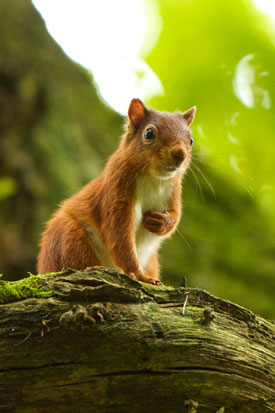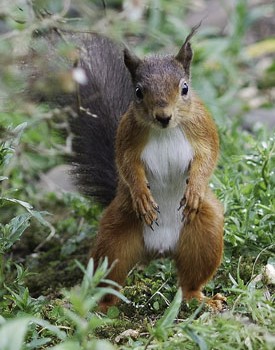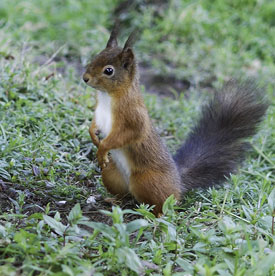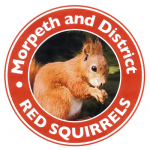 In 2016, the MADRS grey control team removed 720 greys from our patch. 2017 has seen an increase in greys, no doubt greatly contributed to by such a mild winter and to the end of June, we had removed over 900. The damage to trees, predation on bird eggs and fledgelings and obviously the spread of squirrel pox would have been so much greater had it not been for the remarkable efforts of our ‘Grey’ team. We are indebted to each and every one of them, as quite simply, without this control work, we would have lost our Reds by now. It is only through this continued and relentless work that the native Red has any chance of survival. Encouragingly, we have had more red sightings in areas where we have been undertaking control work and I am delighted to say that 2 Reds, in two different areas near Shadfen were seen recently.
In 2016, the MADRS grey control team removed 720 greys from our patch. 2017 has seen an increase in greys, no doubt greatly contributed to by such a mild winter and to the end of June, we had removed over 900. The damage to trees, predation on bird eggs and fledgelings and obviously the spread of squirrel pox would have been so much greater had it not been for the remarkable efforts of our ‘Grey’ team. We are indebted to each and every one of them, as quite simply, without this control work, we would have lost our Reds by now. It is only through this continued and relentless work that the native Red has any chance of survival. Encouragingly, we have had more red sightings in areas where we have been undertaking control work and I am delighted to say that 2 Reds, in two different areas near Shadfen were seen recently.
Again, we stress that this is not a side of red conservation that is taken lightly. It is absolutely necessary to ensure the survival of the reds.
It would seem that all the various ‘official’ organisations and the plethora of acronyms that go with them are all essentially reinventing the wheel and patting themselves on the back about saving the Red squirrel. It is however a reality, that the majority of ‘saving’ the red squirrel is down to the sheer hard work and ‘boots on the ground’ from local groups. Without this extensive effort, these funded organisations would have nothing to save. It is a pity that the majority of the salaried people sitting behind desks in these organisations seem oblivious to this. Read more>>

 As we approach the end of this year, we are starting to focus on the future and you will see that we are still busy across a range of activities. We are:
As we approach the end of this year, we are starting to focus on the future and you will see that we are still busy across a range of activities. We are: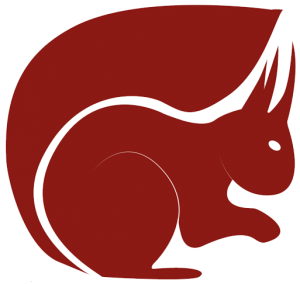 Westmorland County Show is one of the many events we attend each year to promote our work. This year we were honoured to receive a visit by HRH Prince Charles, a stalwart supporter of red squirrel conservation and Patron of the Red Squirrel Survival Trust. He took time to speak with our trustees and supporters, encouraging us to “keep up the good work”. We will!
Westmorland County Show is one of the many events we attend each year to promote our work. This year we were honoured to receive a visit by HRH Prince Charles, a stalwart supporter of red squirrel conservation and Patron of the Red Squirrel Survival Trust. He took time to speak with our trustees and supporters, encouraging us to “keep up the good work”. We will! 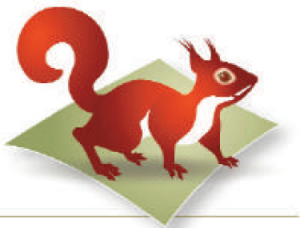 Leprosy was first diagnosed in red squirrels on the Isle of Wight in 2015. Visual signs to look for are unusual ear and skin lesions, although animals with the leprosy bacteria do not always have symptoms. Helen collected ear samples during routine post-mortem examinations she did on 93 squirrels found dead from all around the Island. Deaths due to natural or unknown causes accounted for 33% of cases and 67% ere as a direct result of human activity, especially road traffic. Helen took the samples to Moredun Research Institute and, after training, tested them for leprosy. Only one out of the samples proved positive. The affected squirrel was an adult male that was a road traffic accident in 2016. There were no visible signs of leprosy. It would be interesting to know if there has ever been a leprosy hospital on the Isle of Wight. Are there any historians out there? In the past we have had two confirmed cases of leprosy in squirrels on the Isle of Wight, one had died in 2004 and the second in 2011. The infection is at a low level in the population and has almost certainly been present on the island – and the rest of the country – for a long time.
Leprosy was first diagnosed in red squirrels on the Isle of Wight in 2015. Visual signs to look for are unusual ear and skin lesions, although animals with the leprosy bacteria do not always have symptoms. Helen collected ear samples during routine post-mortem examinations she did on 93 squirrels found dead from all around the Island. Deaths due to natural or unknown causes accounted for 33% of cases and 67% ere as a direct result of human activity, especially road traffic. Helen took the samples to Moredun Research Institute and, after training, tested them for leprosy. Only one out of the samples proved positive. The affected squirrel was an adult male that was a road traffic accident in 2016. There were no visible signs of leprosy. It would be interesting to know if there has ever been a leprosy hospital on the Isle of Wight. Are there any historians out there? In the past we have had two confirmed cases of leprosy in squirrels on the Isle of Wight, one had died in 2004 and the second in 2011. The infection is at a low level in the population and has almost certainly been present on the island – and the rest of the country – for a long time. In 2016, the MADRS grey control team removed 720 greys from our patch. 2017 has seen an increase in greys, no doubt greatly contributed to by such a mild winter and to the end of June, we had removed over 900. The damage to trees, predation on bird eggs and fledgelings and obviously the spread of squirrel pox would have been so much greater had it not been for the remarkable efforts of our ‘Grey’ team. We are indebted to each and every one of them, as quite simply, without this control work, we would have lost our Reds by now. It is only through this continued and relentless work that the native Red has any chance of survival. Encouragingly, we have had more red sightings in areas where we have been undertaking control work and I am delighted to say that 2 Reds, in two different areas near Shadfen were seen recently.
In 2016, the MADRS grey control team removed 720 greys from our patch. 2017 has seen an increase in greys, no doubt greatly contributed to by such a mild winter and to the end of June, we had removed over 900. The damage to trees, predation on bird eggs and fledgelings and obviously the spread of squirrel pox would have been so much greater had it not been for the remarkable efforts of our ‘Grey’ team. We are indebted to each and every one of them, as quite simply, without this control work, we would have lost our Reds by now. It is only through this continued and relentless work that the native Red has any chance of survival. Encouragingly, we have had more red sightings in areas where we have been undertaking control work and I am delighted to say that 2 Reds, in two different areas near Shadfen were seen recently.
 In this edition of Red Squirrel News, find out what the red squirrels on our trail cams have been up to, where red squirrels have been seen recently and and how you can get involved in tracking reds in mid Wales. VWT Pine Marten Project Manager, Jenny MacPherson gives advice on how to avoid getting a pine marten in your traps, and what action to take if you do. Get the lastest information on Phytophthora ramorum disease how Natural Resounces Wales (NRW) are trying to limit the impact on our woodlands.
In this edition of Red Squirrel News, find out what the red squirrels on our trail cams have been up to, where red squirrels have been seen recently and and how you can get involved in tracking reds in mid Wales. VWT Pine Marten Project Manager, Jenny MacPherson gives advice on how to avoid getting a pine marten in your traps, and what action to take if you do. Get the lastest information on Phytophthora ramorum disease how Natural Resounces Wales (NRW) are trying to limit the impact on our woodlands. 